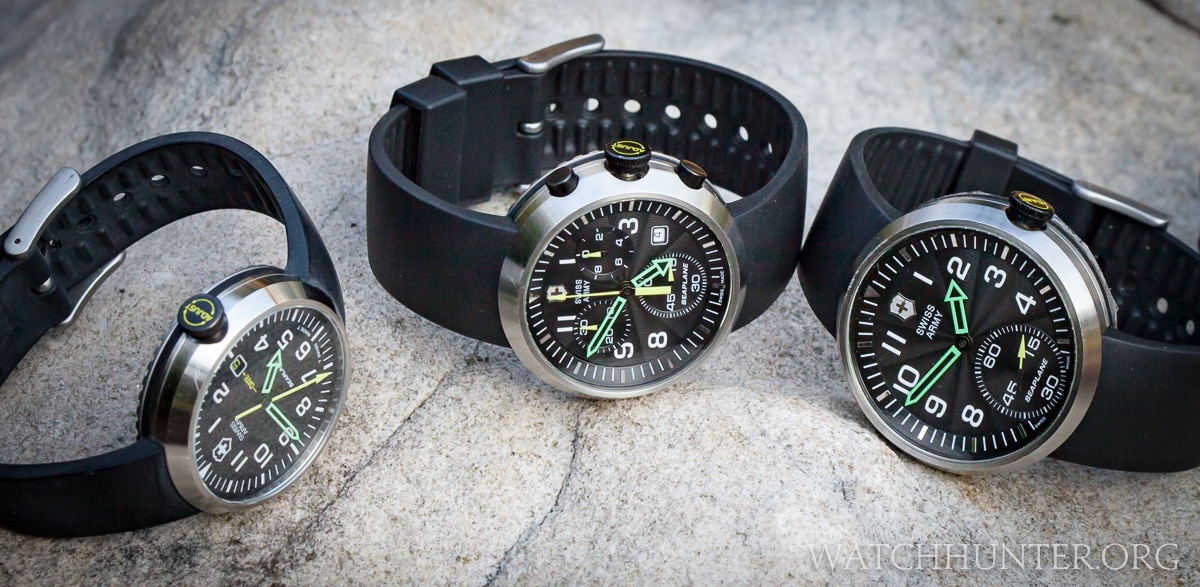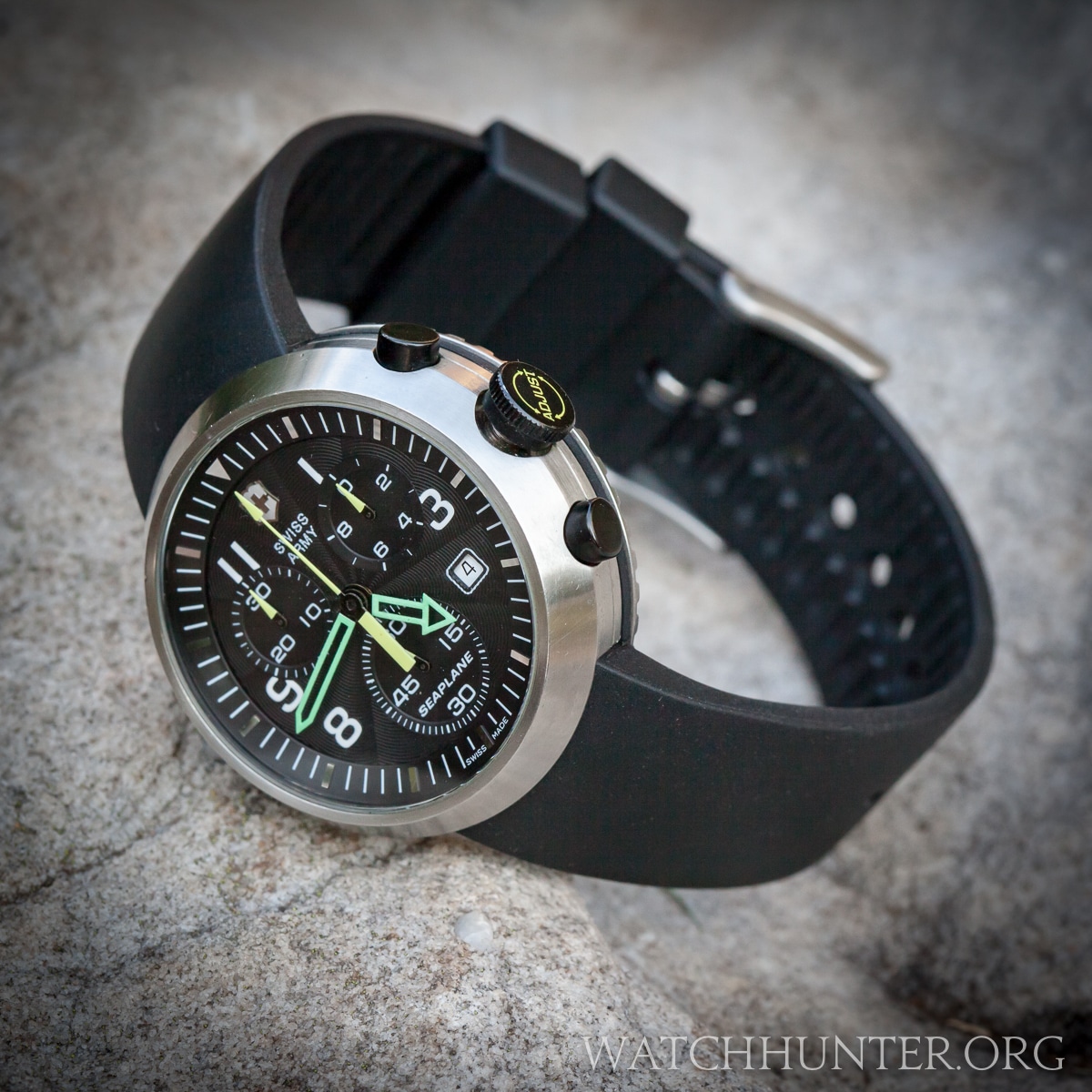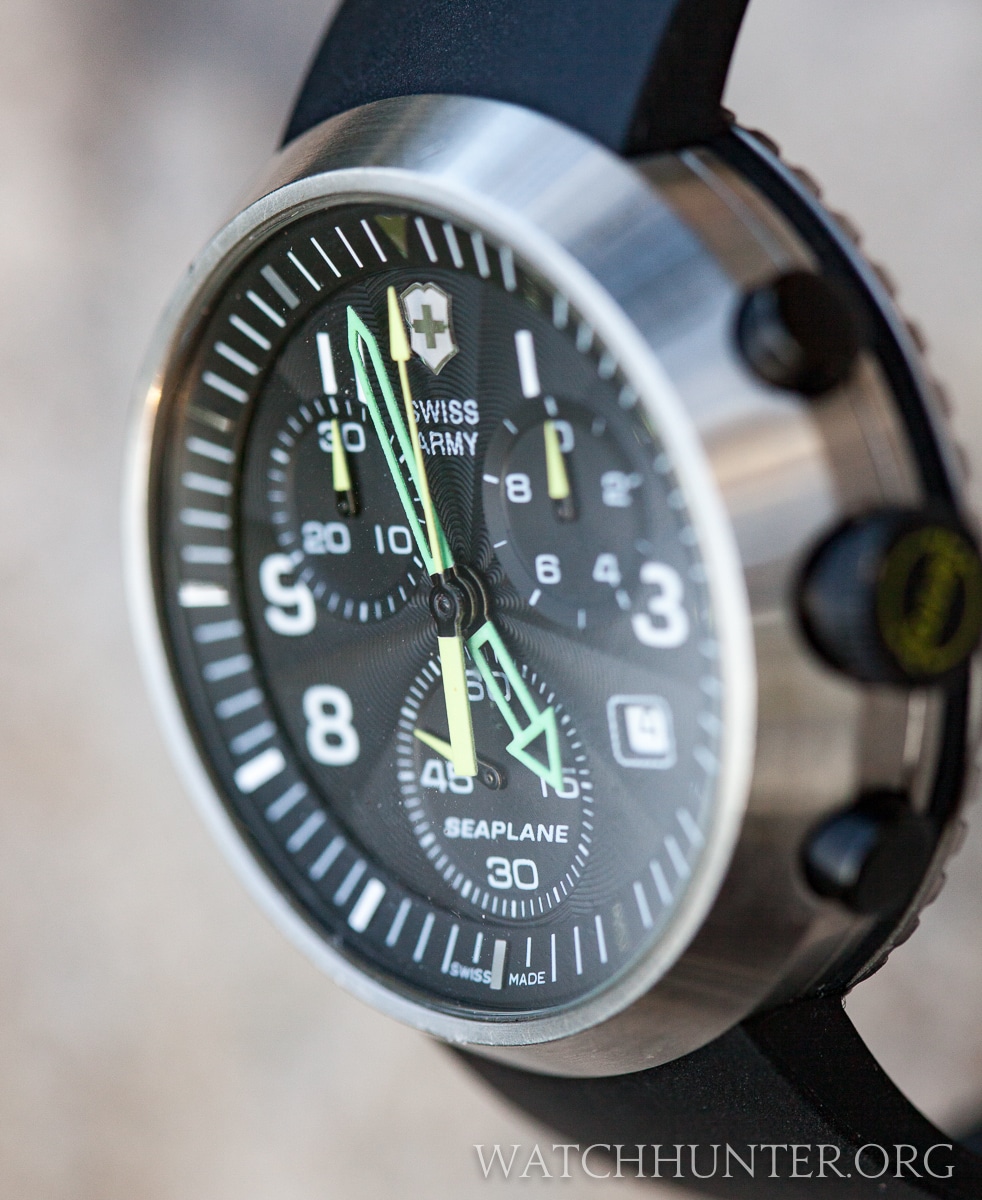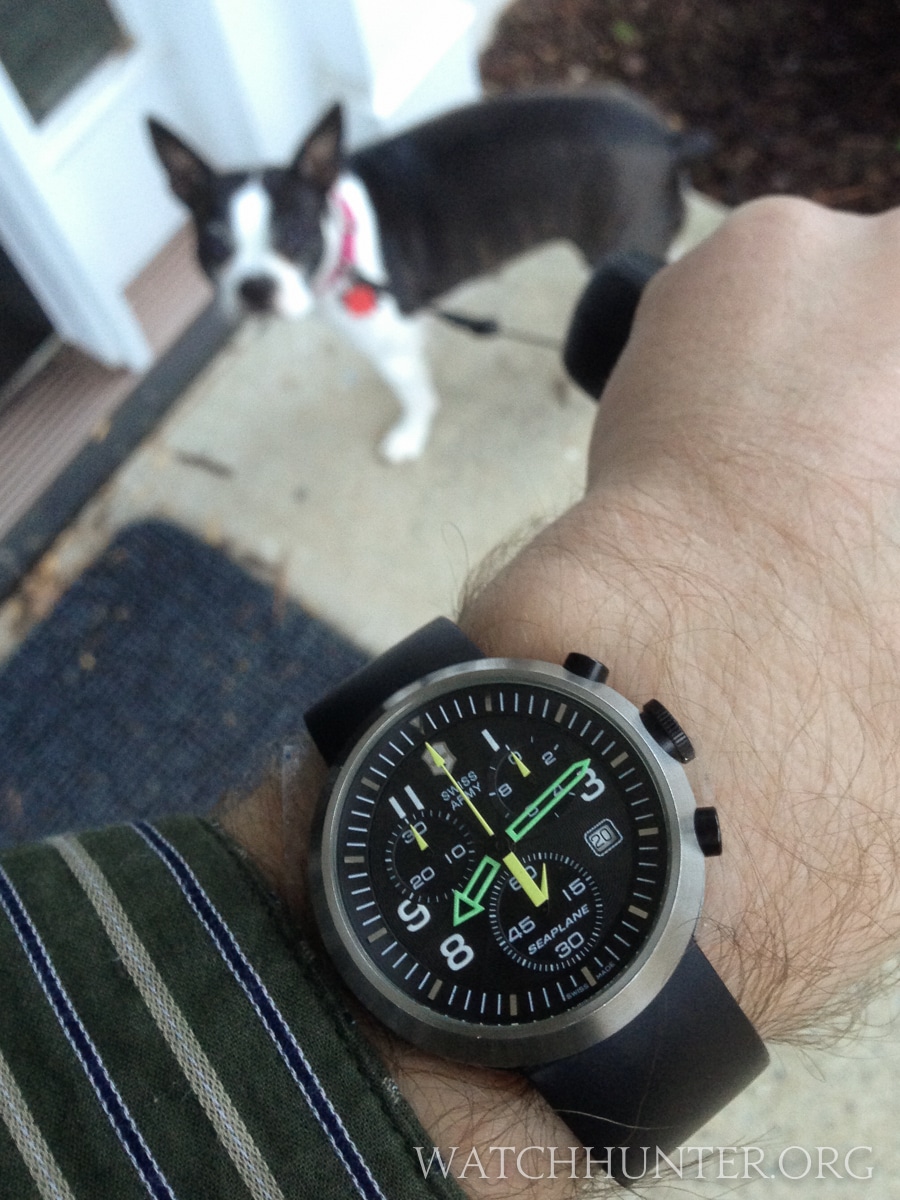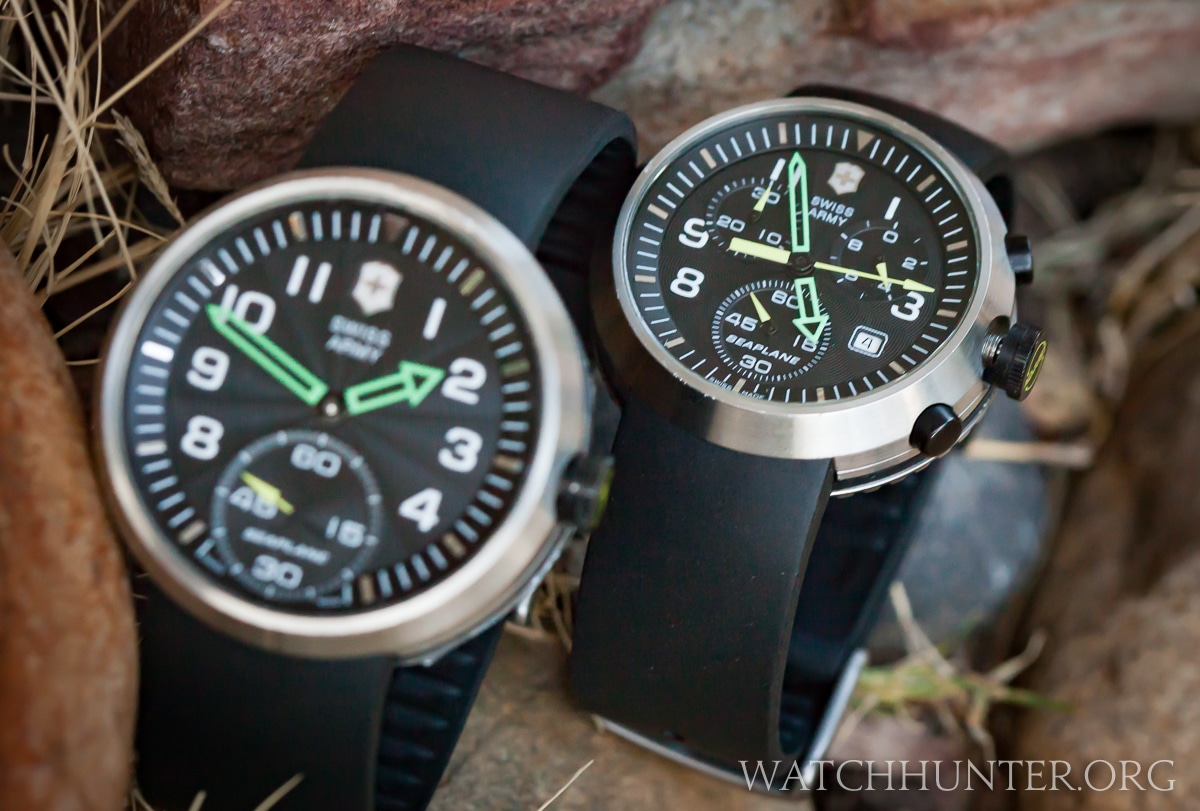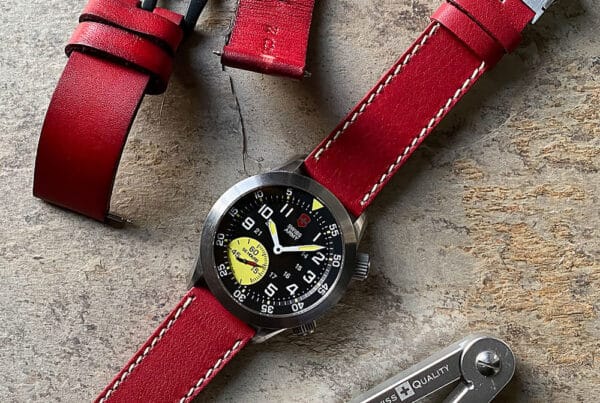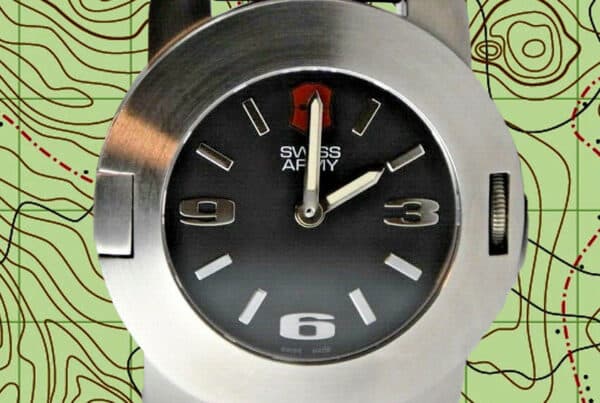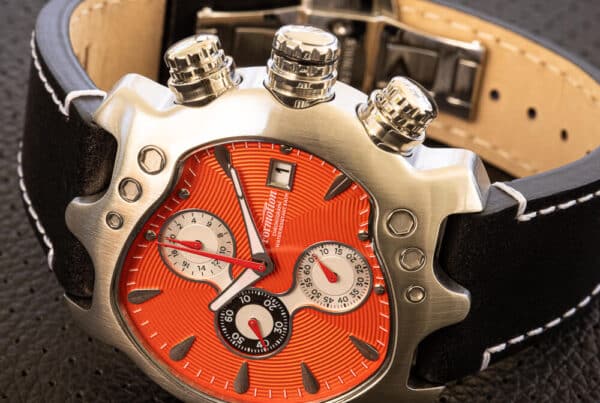It almost seems inevitable that Swiss Army created a chronograph model of their quartz SeaPlane watch. This is standard practice for watch makers to make 3-hand and more complicated chronograph versions of the same model because customers want variety. In total, the SeaPlane series had two quartz 3-hand SeaPlanes, one quartz chronograph SeaPlane, and one hand-wound mechanical SeaPlane XL and a limited edition mechanical SeaPlane XL in conjunction with Yamaha Motorcycles.
The SeaPlane Chronograph had the design features of the second version of the quartz 3-hand SeaPlane watch. That included a sloped chapter ring with metal indices, a textured guilloche dial and a highly stylized yellow arrow complete with a delicate taper to the point and a thick counterweight. The color palette remained the same, but more yellow was used in the chronograph triangular sub dial needles. This splash of color makes this dial shine with a face like no other watch.
While the dial is unique, the case shape of the Seaplanes reminds me of a different rare watch. I wonder if Swiss Army designers had seen the work of Marc Newson, the industrial designer who was later involved with the Apple Watch. Can you see the similarities between the Swiss Army SeaPlane Chronograph and the Ikepod Hemipode, which he also designed? The Hemipode predated the Swiss Army SeaPlane Chronograph by many years and would have been known by other designers. They both have no lugs, a sloped case, rubber straps and highly stylized hands. Even the crown and pushers seem similar. Both have a penchant for the use of memorable colors. It seems like a plausible, but unprovable theory.
The photo below shows pretty accurately what the SeaPlane Chrono’s stainless steel indices and case look like in real life. The brushed case reflects local color the environment and the polished indices reflect whatever is facing it. That means that some indices will be visible and some will not. It just depends on what is being reflected at the time. Compare that to the white numerals and you can guess that this and the rest of the SeaPlanes with layered dials were not great low-light performers.
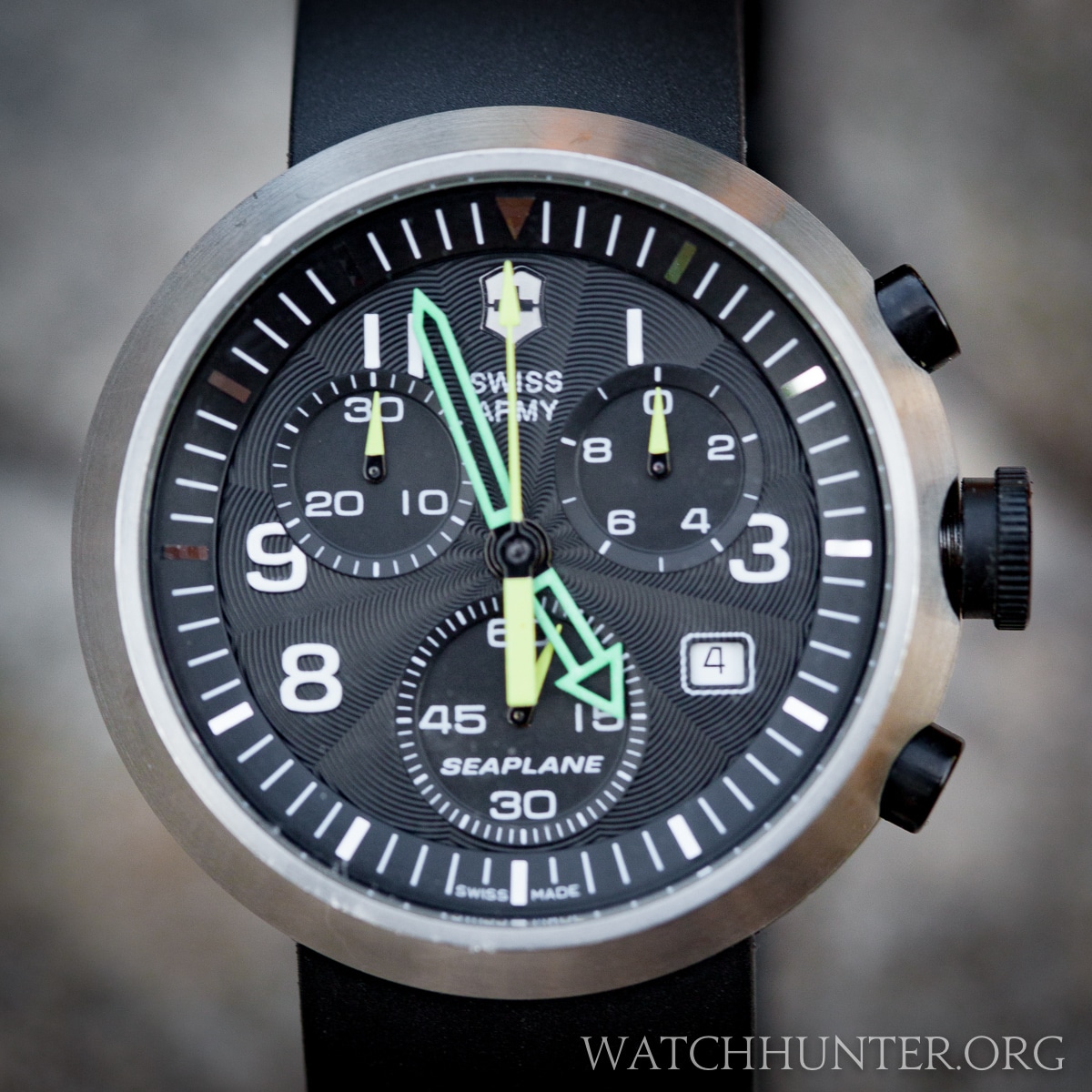
The Victorinox Swiss Army SeaPlane Chronograph had applied indices, a guilloche dial, and brightly colored hands
The SeaPlane chronograph was the black sheep of the series concerning the numerals. The designers took great liberties with them and only the number 8 is intact. The rest of the SeaPlane had mostly intact numerals. It makes me wonder what this might have looked like with just dots instead of a few partial numbers. A quick Photoshop exercise below on the right shows that it would probably NOT have been an improvement, but it is fun to think about the possibilities.
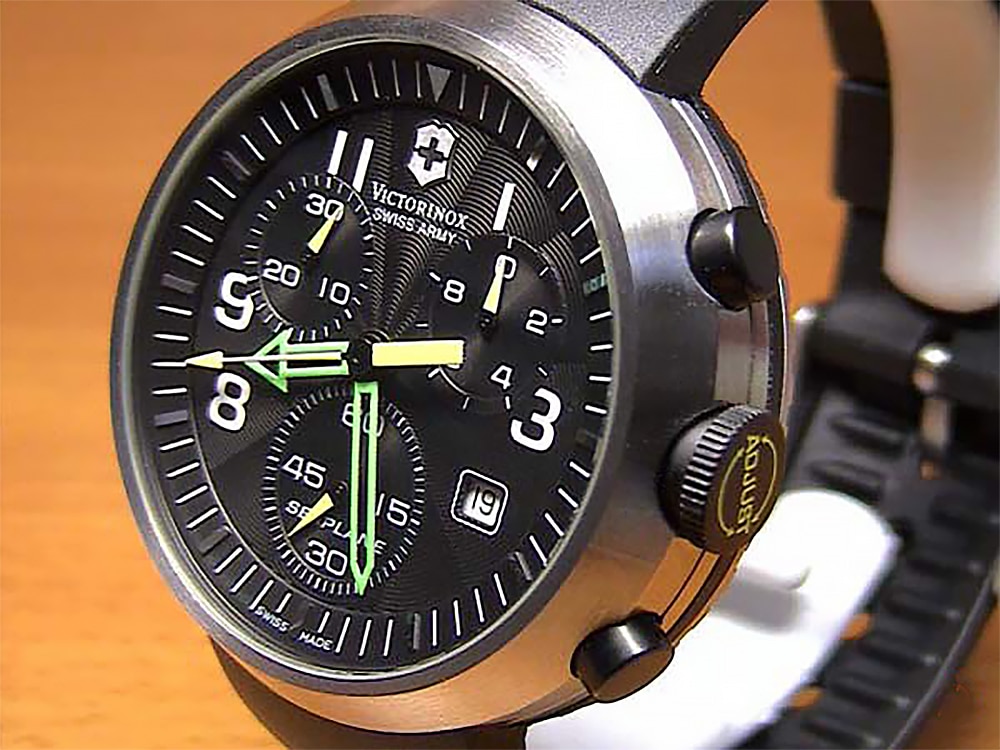
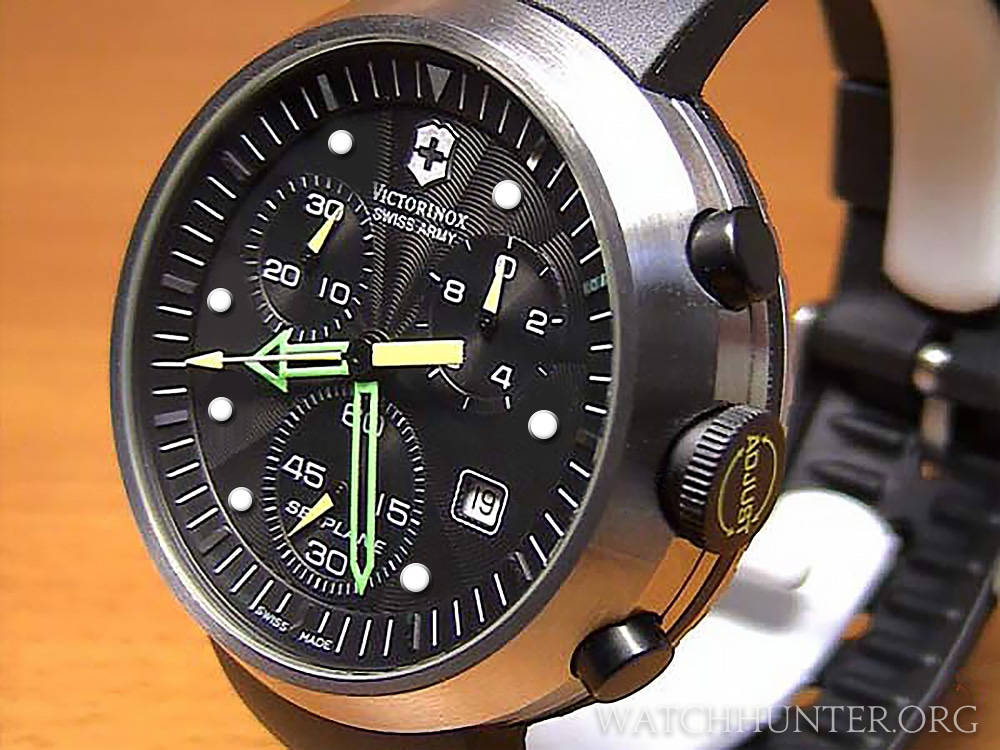
While most of my other SeaPlane watches will soon be for sale, I do not plan on selling the Chronograph. There is something timeless, yet quirky about it. That early 2000’s styling still looks good to my eye, even if my Member’s Only Jacket has gone stale. Add that to the fact that I found an ultra rare European metal bracelet for it, and I’ll have to keep it. The metal bracelet will fix the biggest weakness of the unconventional watch band replacement system, which used plastic 1-piece molded wristbands that are fragile.
I am not sure that Swiss Army was rewarded with a big sales success, which may account for its rarity. If you find a SeaPlane Chronograph for sale today… do not hesitate to grab it because you might not see one again. It’s a quartz watch so all you need to do is change the battery and not worry about expensive overhauls.

You might find it difficult to find such a unique and daring watch design from a Swiss company… but some do exist
I have turned down a few offers for this particular watch and I do not regret that in the least. In fact, I think it might be the most interesting of the SeaPlane series. We’ll find out in the conclusion of the Swiss Army SeaPlane series when we explore the SeaPlane XL… teaser below.


